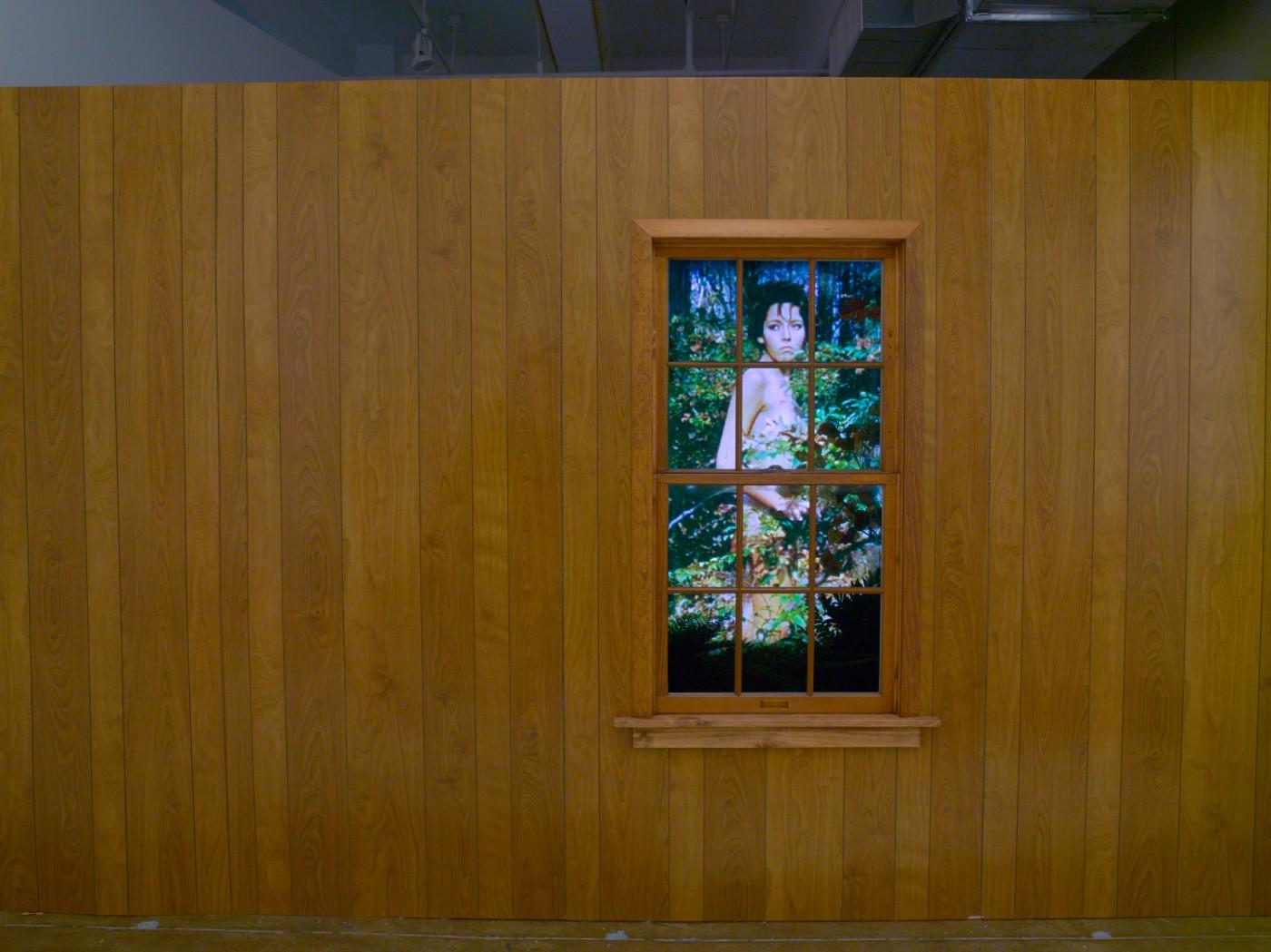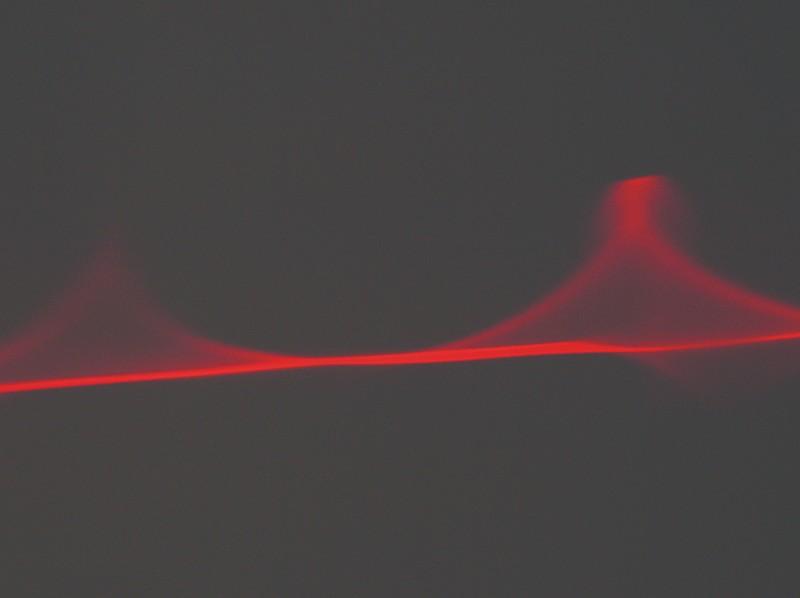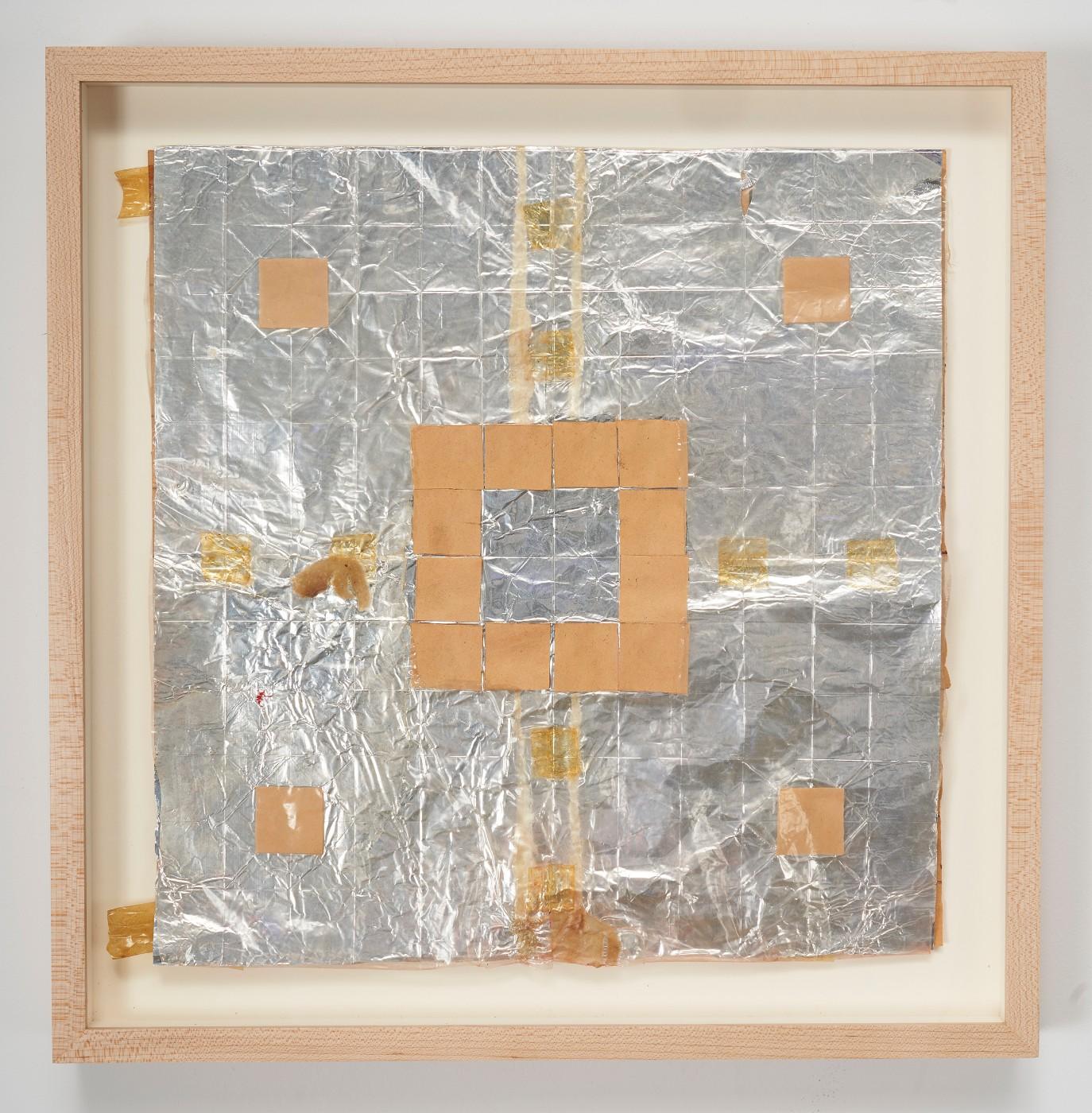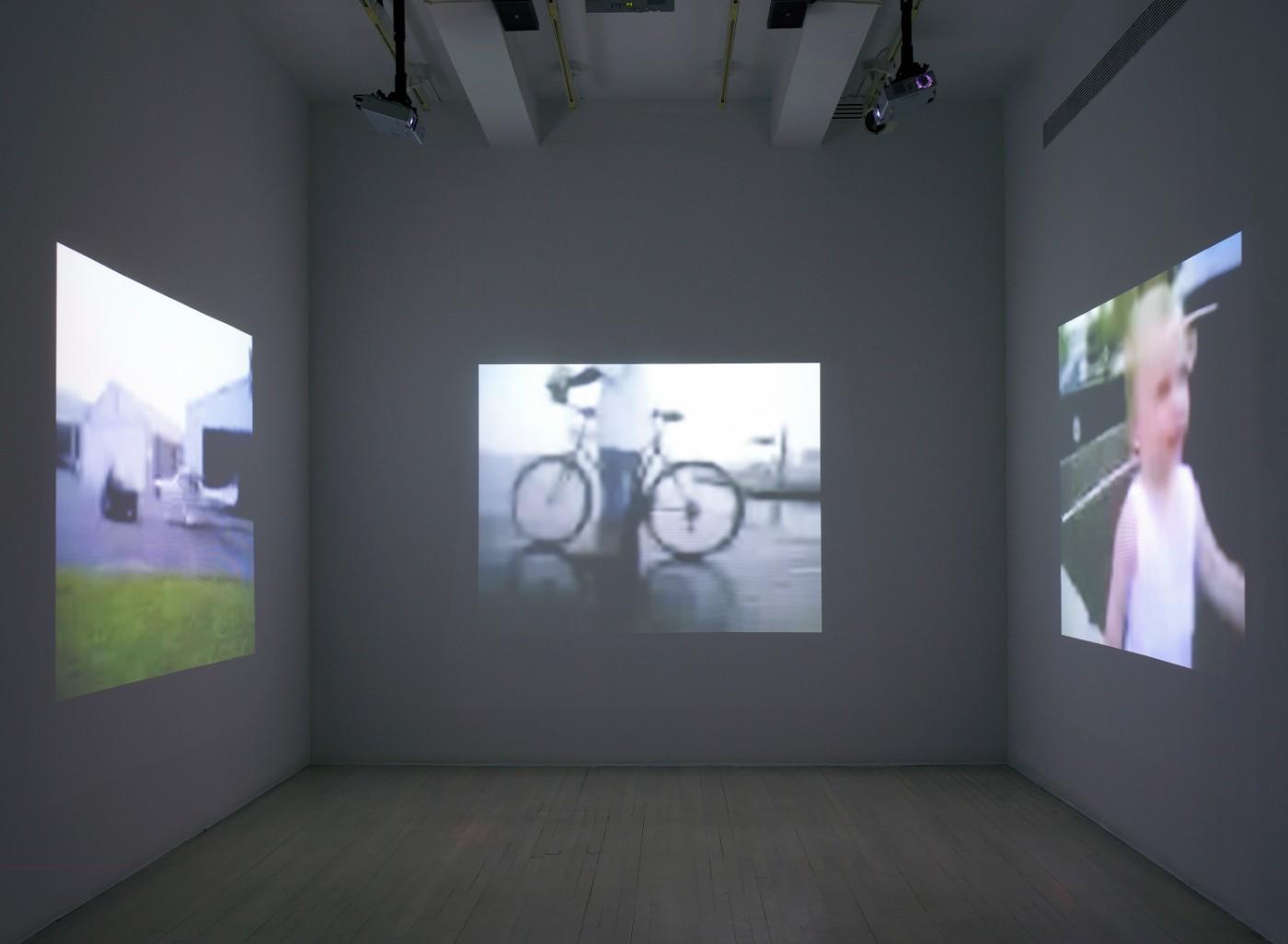In a major survey encompassing over six decades of work, New York’s Pace Gallery is celebrating multimedia innovator Robert Whitman. 61 contains over thirty works, from 1957 through 2018. Beginning with works on paper, early films, and sculptures, it includes Whitman’s first sculptural installation—Untitled (1957), an over 10 ½-foot long thread hanging from the ceiling. It also includes laser projections, and mixed-media and video installations, ending with pieces from his most recent series Soundies (2015)— which pairs still images, like a burning match or a diving board, with a recording of the related sound.

Robert Whitman, Window, 1963, DVD, window, artificial foliage, and white backdrop

Robert Whitman, Wavy Red Line, 1967, laser projection
One of the highlights of 61 is Whitman’s multi-screen video and sound installation, Local Report (2005). Participants used cell phone cameras to transmit images and sounds from their communities. These were streamed live to the project’s website, becoming the video and sound components of the installation. Local Report is a modern permutation of News (1972), a live local radio broadcast of Manhattanites who’d been given coins to report from citywide payphones on what they saw.

Robert Whitman, Untitled, 1957, aluminum foil, paper, and Scotch tape
Born in 1935, Whitman was one of the first artists to explore integrating new technology into art. A leader in the 1950’s New York downtown art scene, Whitman pioneered multimedia installation and performance art. Fascinated with the communicative power of images, Whitman investigates new ways imagery can be used to facilitate perception, communication, and connection. To help artists access new technology and promote relationships between science and art, Whitman co-founded Experiments in Art and Technology (E.A.T.) in 1966 with Robert Rauschenberg and engineers Billy Klüver and Fred Waldhauer. Designed to connect artists and engineers, E.A.T established regional chapters throughout the 1960’s. While advancements in technology over the past 50 years have been manifold, the importance of integrating science with the arts has increased exponentially, showing that Whitman was ahead of his time in his beliefs and artworks.
Robert Whitman: 61 is on view through December 22, 2018 at Pace Gallery New York.

























![DEl Kathryn Barton [Australian b. 1972] the more than human love , 2025 Acrylic on French linen 78 3/4 x 137 3/4 inches 200 x 350 cm Framed dimensions: 79 7/8 x 139 inches 203 x 353 cm](/sites/default/files/styles/image_5_column/public/ab15211bartonthe-more-human-lovelg.jpg?itok=wW_Qrve3)



